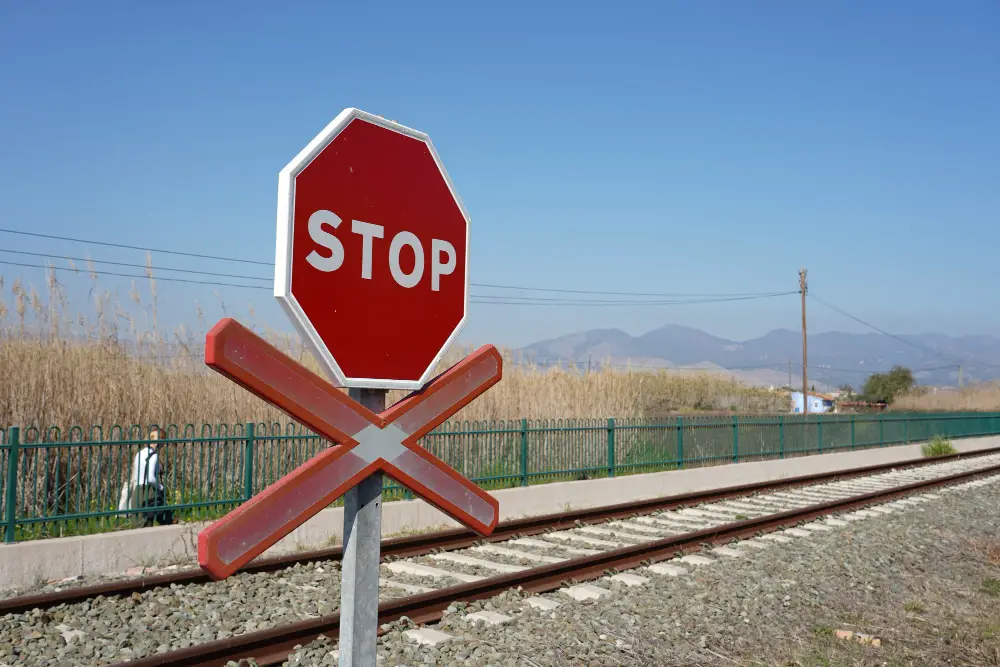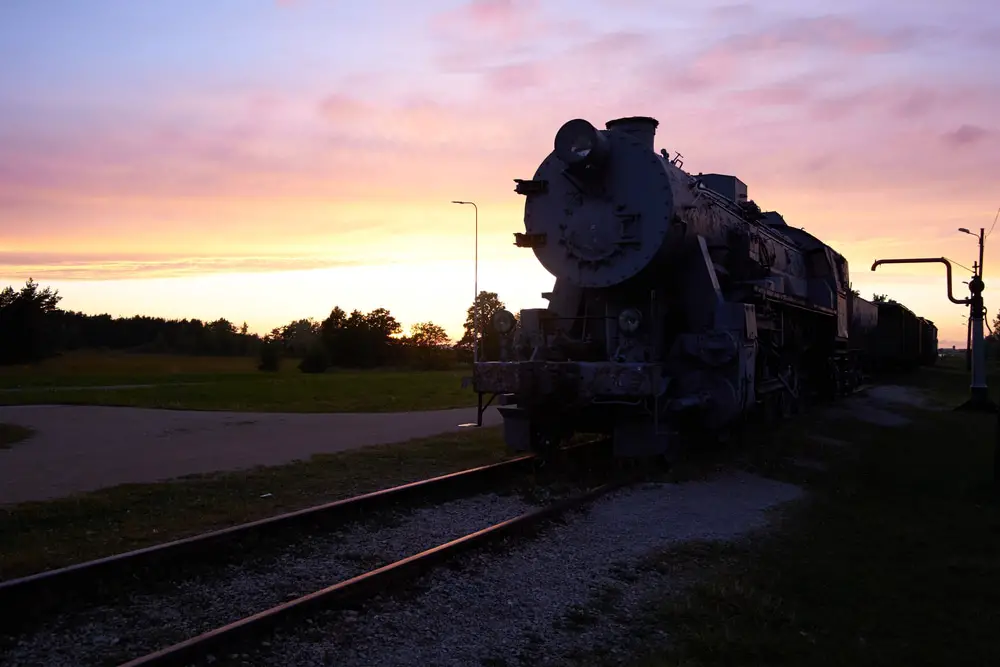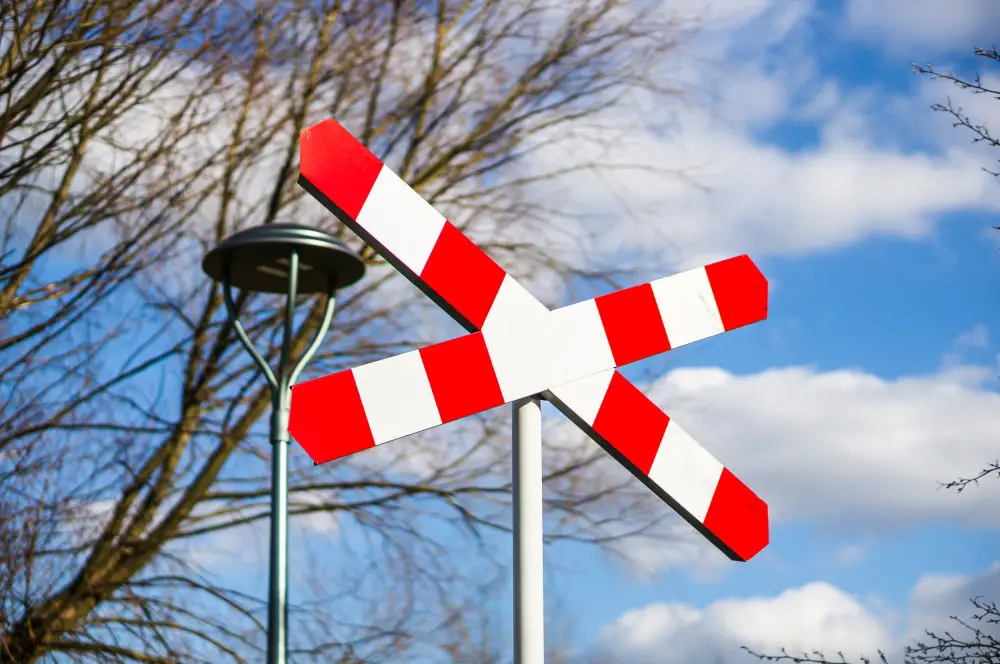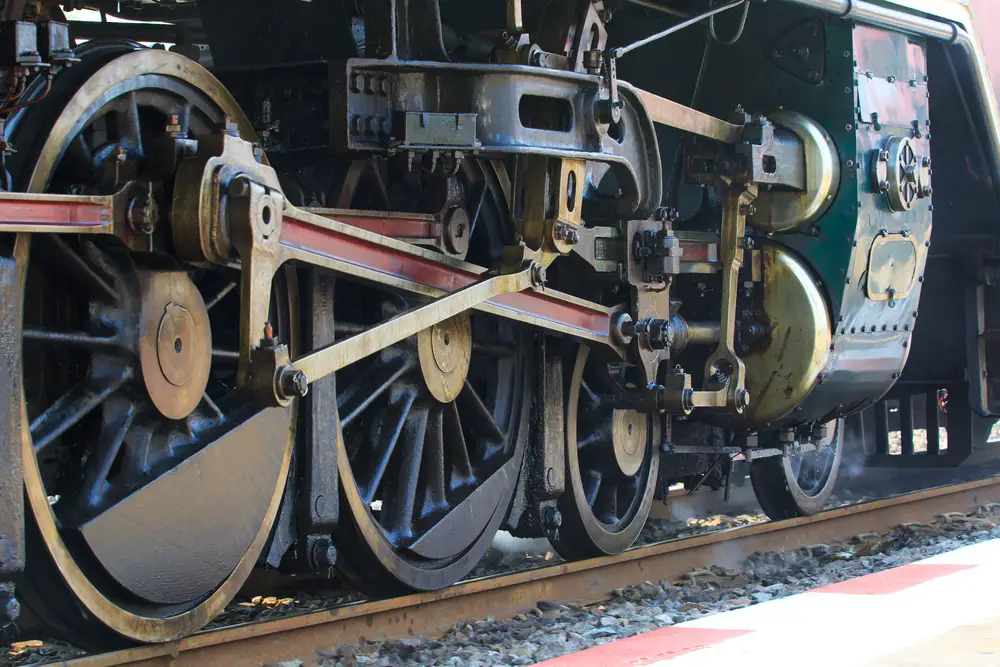So why do trains stop? Well, there are many reasons. Reasons include dropping and picking up passengers, or loads, a site of danger, crew changeover, mechanical or operational issues, or track infrastructure issues. A train will also stop to allow another train to pass.

Getting stuck at a railroad crossing can test your patience. You put your car in park and try to see how long the freight train is. Unfortunately, you can’t see the last car. You have no idea how long it will take for the train to cross.
And suddenly, the train stops to a halt. The train stops in the middle of the crossing and you can’t turn your car around because of the traffic behind you.
Freight trains that are transporting goods can often cause a blockage, a long one. These incidents are inconvenient for many people especially if you’re rushing to go to work or attending to important matters.
So, why do trains stop? Let’s explore some of the many reasons.
How Long Can a Train Legally Stop and Block a Crossing?
The Railway Safety Act section 29 states “where any railway crosses any public highway at rail level, either the railway company or its officers, agents or employees shall willfully permit any train to unnecessarily interfere with public traffic.”
Federal regulations aim to ensure that trains are always moving. Unfortunately, statutes of different states also differ on the maximum time a train can block a crossing. There are guidelines that ensure that trains and other equipment will not block any crossing where vehicles and people are waiting to pass through for more than 20 minutes.
Of course, there are exceptions to this rule like emergencies where the crew has no control to move the train away from the crossing. Additionally, there’s no law to address the issues of crossing blockage because the restrictions are set to municipalities, villages, towns, and cities.
Reasons Why Trains Stop
Whether it’s because of operational or mechanical issues, both freight and passenger trains can stop while traveling. Here are the reasons why they can stop.
Sign of Danger
Many railroad tracks are still in single-line loops, especially in and around stations. There are also areas where you’ll find routes switching from double lines to a single line.
When this happens, a train that’s entering a crossing or a converging junction will need to stop if a train is coming from the other side. Since many trains are traveling through a single line, your train may stop and wait for the opposing train to pass by before moving again.
Unnecessary Track Blockage
If the engineer sees any items or animals blocking the train, it will need to stop. For instance, if there are reports of a rail blockage ahead of the train, the engineer will stop the train until the blockage is clear. Animals can also become a reason for train stops when they are crossing the tracks.
Crew changeover
A train stops if there’s a schedule for a crew changeover. Changeover happens in areas where there are accommodation quarters for the crew that is ending their shifts. This is where they can wait for their next working shift and schedules.
A changeover point should have sufficient quarters for the crew and drivers. In most cases, you can find these points in fairly remote areas with double or single line tracks.
Mechanical or Operational issues
Like everything else in our lives, there are cases where a train may experience mechanical or operational issues. When these issues occur, a train may stop at their point to ensure that everyone is safe.
Some of the situations are extreme weather conditions, general wear & tear of the train or tracks, or extreme temperatures. If a mechanical issue happens, the train will stop and the engineer will call a technician to try and fix the issue. If the technician is unable to fix it, the crew will get another locomotive to try and move the train.

Track Infrastructure Issues
There are generally defect detectors every ten miles on a railroad network. These devices report any dragging equipment, count the number of axles, and report any over-heated journals. Once these detectors notice red flags on the reports, the conductor must check the entire train.
The inspections will include brake checks and searching for the hot journals. Once he finds defects, they will need to correct them before the train can start again.
Loading or Unloading Goods or Cars
A freight train always stops when they are loading or unloading goods to businesses that are railway serviced. Although, if the train is doing this task, you will notice that the train moves back and forth a number of times.
Additionally, a train also stops when they are coupling or uncoupling the cars behind the train. This usually happens when there are cars that need to be attached or detached from the current train.
How Do Trains Stop?
Both freight and passenger trains have emergency brakes that are controlled by the engineer. These breaks are an aggressive way to try to slow and stop the train. However, it’s important to remember that a train cannot come to a full stop immediately.
For modern passenger trains, emergency breaks are available. Passengers can use these breaks in case of emergency situations inside the train.
How Does a Train Stop upon Rail Work?
A train stop (also known as tripcock, tripper, or trip stop) is part of the railway signaling system that acts as a train protection device. The train stop automatically stops the train if it passes through the signal that prohibits it to do so. It also helps stop the train if it exceeds the speed required for the device.
There are two components to this device. First is the trip arm mechanism that is mounted on the ground in the railing. The other component is the train-mounted trip stop that is directly connected to the braking system of the train.
The trip arm is always raised in any situation. Once the train passes through the mechanism, it determines if the train is safe to proceed. If it is safe, the trip arm will go down and the train can move forward. If it’s not safe or if the train is moving too fast, the trip arm will switch the train-mounted trip stop to bring the train to a stop.
You’ll find three types of train stops in railway networks. These are:
Trips Stops
This stops the train when it tries to pass through a red signal. As we’ve mentioned earlier, this device will automatically trigger the mechanical braking system of the train if it tries to move forward
Timed Train Stops
This type of train stop follows a track circuit that reacts with the speed of the train. If the train exceeds the required speed on the rail, this train stop will trigger the braking system of the train to put it to a halt. If the train has an equal or lower speed than required by the train stop, it will continue moving forward without any hindrance from the train stop.
Fixed Train Stops
With this type of train stop, the trip arm does not go down in any circumstances if a train passes by. This is positioned at the end of a dead-end track to stop the train before it reaches the end track. These train stops are also used to test the automatic brakes of the train and at tracks that should not proceed to electrified territories.
In some railways, crews temporarily install fixed train stops in work zones to protect the workers.

Who do I Call if There’s a Train Blocking the Road for Too Long?
The FRA (Federal Railroad Administration) launched its web portal where you can report blocked railroad crossings for too long. Any law enforcement or the public can report any blocked highway-rail grade crossing.
The webpage, www.fra.dot.gov/blockedcrossings, requests the following information from the user:
- Date of the incident
- Location of the incident
- Time of the incident
- Duration of the blockage
The FRA will use the reports to study the impact of the obstructions that happen in different areas around the nation. They will then share the reports and information with different stakeholders to try and find a solution to the problem.

Why Do Trains Stop? – Conclusion
A train may stop at any given time in any location. It can either be mechanical or operational issues or a need to change the crew members. There are also instances where a blockage on the track can happen or the train needs to load or unload materials to a warehouse.
I tell people, instead of letting a train blockage cause you stress, flip the situation around and use the time to be patient and focus on the present.

